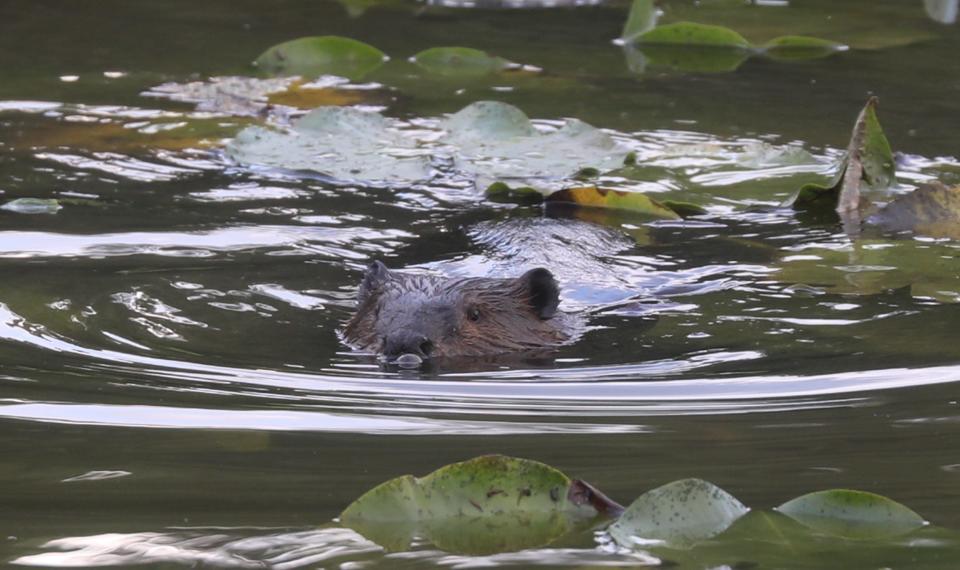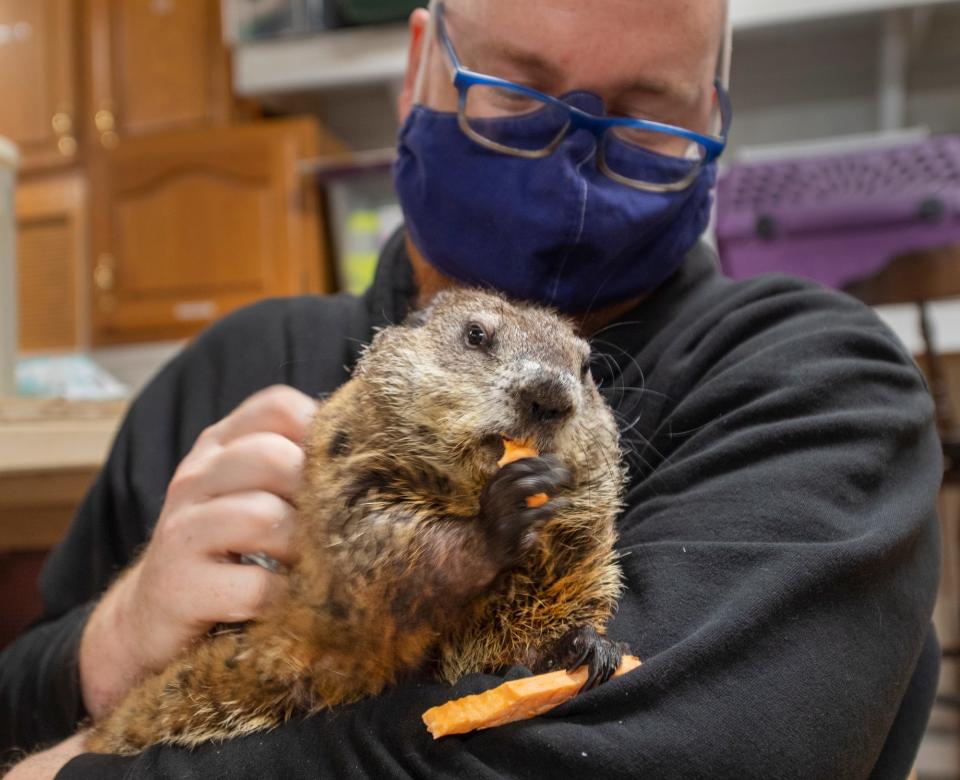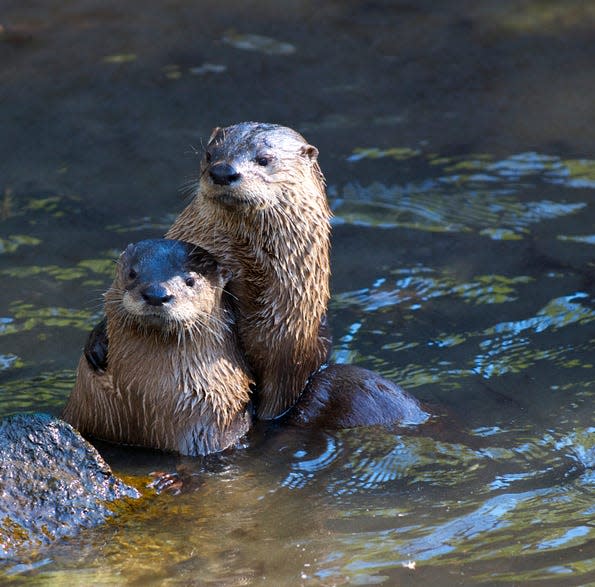Know your Susquehanna River rats: otters, beavers, groundhogs, muskrats and ... nutria?
The recent talks of possible mountain lions being spotted in York County (which the state Game Commission determined were house cats) reminded me of a Facebook post I saw in January when someone claimed to have seen a nutria rat in the Susquehanna River near the Veterans Memorial Bridge that runs between Columbia and Wrightsville. Could nutria be in waters that cold? I was skeptical.
Then, in April, Leah Deffes of Springettsbury Township posted on the Nextdoor app that she had found what appeared to be a dead nutria in her yard, but she did not confirm if it was one or not.
When I moved from Louisiana to Pennsylvania two years ago, I knew that the wild animals I was used to seeing wouldn't be a normal sight − if I saw the mammals, reptiles and birds I was used to at all.
But Pennsylvania has surprised me.
In recent months, there have been confirmed sightings of alligators and pelicans, and many alleged sightings of nutria rat, in and along the Susquehanna.
But what exactly are nutria and how likely are they to be found this far north?
Nutria
Nutria, also known as swamp rats, are large rodents that live in areas with lots of freshwater. Native to South America, these mammals were introduced into the U.S. in the early 1900s through the fur industry, according to the U.S. Department of Agriculture. Nutria are now thought to be one of the most invasive species on the planet.
These big rodents grow to between 17 and 25 inches long, from head to rump, which is roughly the size of a raccoon. Their tail, however, adds another 10 to 16 inches. The animals weigh between 15 and 22 pounds and they have two large, orange front teeth.
More on mountain lions in Pa.: Are there mountain lions in Pennsylvania? A reported sighting in York reignites the debate
These large rats live in burrows connected by tunnels, always near bodies of fresh water. They eat around 25% of their body weight each day in plants − roots, bark and all − and they even eat corn, sugar cane, insects and snails. Because they eat the entire plant, it's less likely to grow back and removing the root system destabilizes the soil around the water. Between this erosion and the burrowing habits of the rat, water retaining and flood-control levees are damaged and disrupted, according to the U.S. Department of Agriculture.
Nutria also play host to several diseases and parasites, including tuberculosis, tapeworm and nematodes. It can be a health hazard for people and animals to drink or swim in water that has been contaminated by nutria feces and urine. This is why many wildlife groups work to completely eradicate the rats when they find them in local waters.
But can these critters survive in the icy cold waters of the Susquehanna during the winter? Much to my surprise, the answer to that is "yes."
They have been confirmed in waterways in Oregon, Maryland, Virginia and Delaware. In an interview with the York Daily Record, the Pennsylvania Fish and Boat Commission officials said they have heard many reports of nutria being in various rivers and lakes throughout the state, although they were unsure how many of those were confirmed sightings.
The Pennsylvania Game Commission said in a voicemail that they have not received any reports of nutria in York County. Many state wildlife departments encourage people to report any sightings of the creatures, though, even in places where the animals are thought to be absent.
While nutria may be a gray area, there are other large rodents that you can easily find in the Susquehanna River and other waterways in the state.
Muskrat

The Pennsylvania Game Commission and the Fish and Boat Commission both said that muskrats are known to be in the waters in this region, but they are not as abundant as they used to be. This medium-sized rodent can be found in a wide range of climates and habitats.
Size: 16- 25 inches long, with tails adding another 7-11 inches; they weigh around 1.5 to 4 pounds.
Habitat: Muskrats live in wet areas with at least 4-6 inches of water, particularly in marshes. They do not do well in hot, dry weather. They build burrows in the ground and lodges out of vegetation.
Diet: Muskrats aren't picky and have even been known to resort to cannibalism. They prefer vegetation like cattails, waterlilies and pondweed. They also eat snails, mussels, salamanders, fish and even birds. Muskrats eat one-third of their weight every day.
Meet Hope, the alligator: Meet Hope the alligator visiting the vet after she was hit by a car
Groundhog

I was surprised to learn that groundhogs like to swim, since this is not a large rodent I am very familiar with even though they do live in Louisiana. The Fish and Boat Commission said these critters aren't shy of the water. Groundhogs belong to the group of large ground squirrels known as marmots. In fact, groundhogs are the largest members of the squirrel family.
Size: Groundhogs are 17.75-24 inches long, according to National Geographic, with tails from 7-9.75 inches long. They weigh around 13 pounds.
Habitat: Groundhogs like woodland areas that bump up against open fields. They dig large burrows that have two to a dozen entrances, and they keep their burrows tidy by changing out the nesting.
Diet: These rodents only eat vegetation, such as fruit, tree bark and grasses.
Beaver
If you do see a large rodent in the Susquehanna, it's most likely a beaver. These are among the largest living rodents in the world. They have thick fur, webbed feet and flattened, scale-covered tails.
Size: American beavers typically weighs 60 pounds and are 23-39 inches long, with a 7.75- 12 inch tail, according to National Geographic.
Habitat: Beavers live in or around freshwater ponds, lakes, rivers and swamps. A beaver’s home is a little dome-shaped house made from woven sticks, grasses and moss plastered with mud. These are called lodges and they are built on the banks of or very near water. Many have an underwater door for instant access to swimming.
Diet: Beavers are herbivores, and they prefer to eat trees like willow, aspen and birch, but they also eat aquatic plants.
More critters to see: Sickly critter spotted roaming in Springettsbury Township, state Game Commission responds

River otter
The river otter is abundant in Pennsylvania's waterways, according to the Pennsylvania Fish and Boat Commission. They are playful mammals with thick fur, short legs, webbed feet and a long, narrow body.
Size: A river otter can grow 3 to 4 feet long, including its tail, and weigh between 11- 30 pounds. The tail makes up about a third of their total length, according to the National Wildlife Federation.
Habitat: River otters can thrive in any water habitat, in cold or warm climates, as long as the habitat provides enough food. River otter dens are along the water in abandoned burrows or empty hollows, and they have entrances underwater so the dens can be accessed from the water.
Diet: River otters eat fish, crayfish, crabs, birds, amphibians and reptiles. They have also been known to eat aquatic plants and to prey on other small mammals such as rabbits and muskrats.
Capybara
Okay, this one may be a stretch, and there have been no confirmed sightings of wild Capybaras in Pennsylvania, but they are worth mentioning. They are the world’s largest rodent, after all. Capybaras are as big as some dogs, have webbed feet and they don’t have a tail. They resemble giant guinea pigs.
Size: Capybaras are a little over four feet long, and up to two feet tall from foot to shoulder. They can weigh 60-143 pounds, depending on gender. Females are a little larger than males, according to National Geographic.
Habitat: These water-loving rodents need water to keep their dry skin moist and are found only in areas with abundant water sources.
Diet: Capybaras are herbivores and only eat vegetation, like water plants and grasses. Eighty percent of their diet consists of only five different species of grasses, which are not native to Pennsylvania, making it unlikely that one could survive in the wild here. One gross dietary habit, though, is that they eat their own feces, because it allows them to get more nutrients from the grasses they digest.
More invasive species: If you catch a northern snakehead in the Susquehanna River, kill it, don't release it
This article originally appeared on York Daily Record: Know your Pa. Susquehanna River rats

